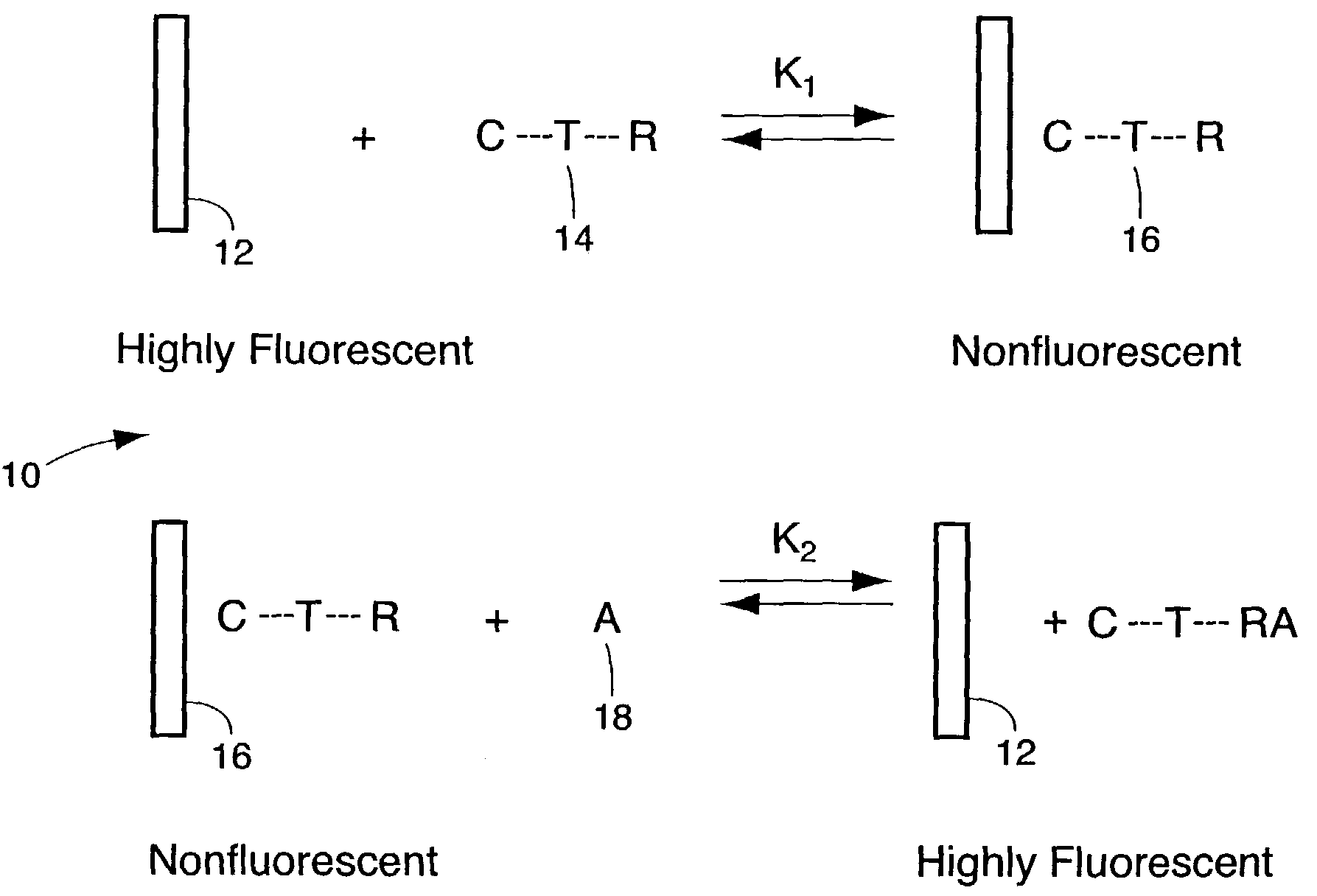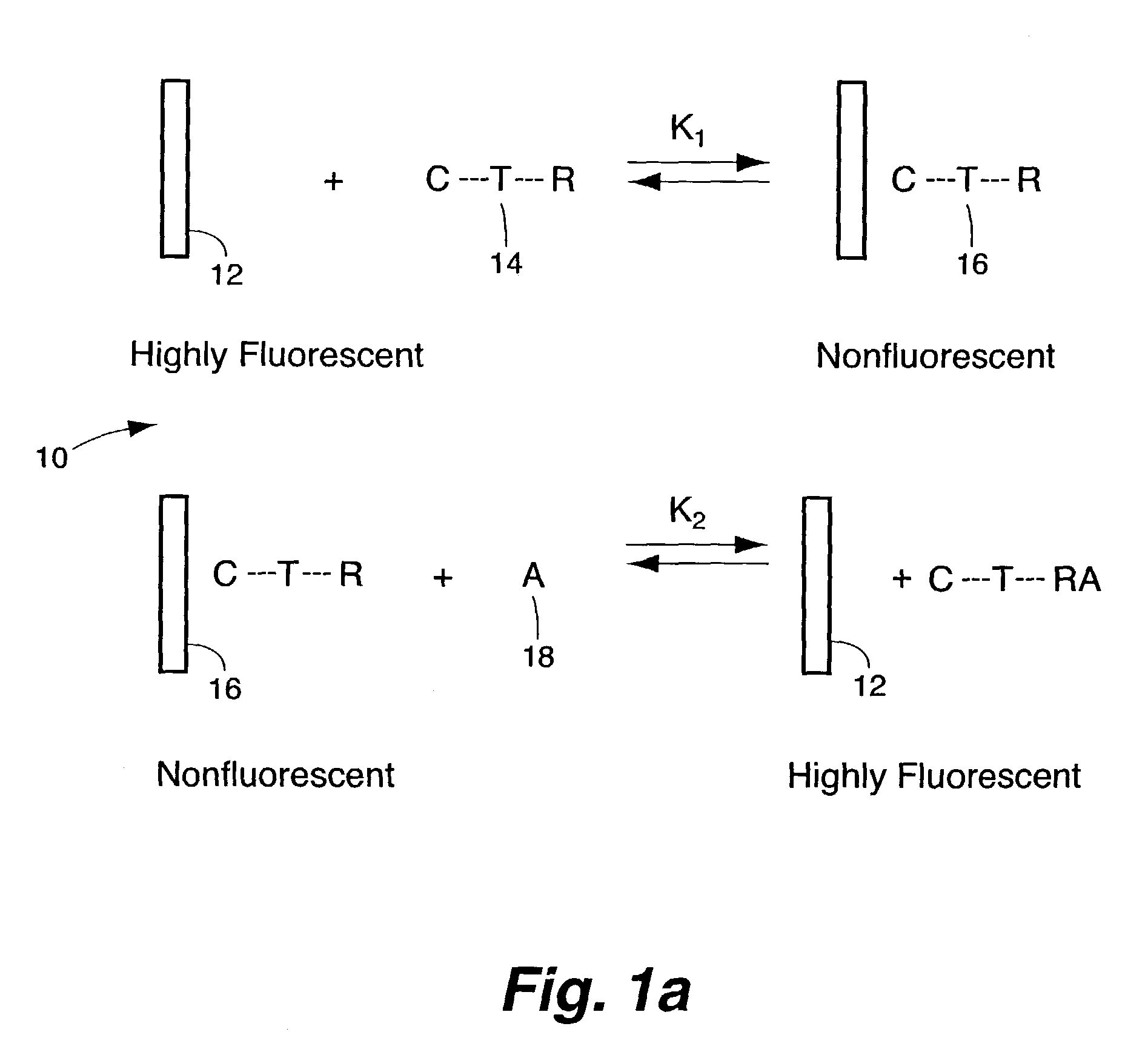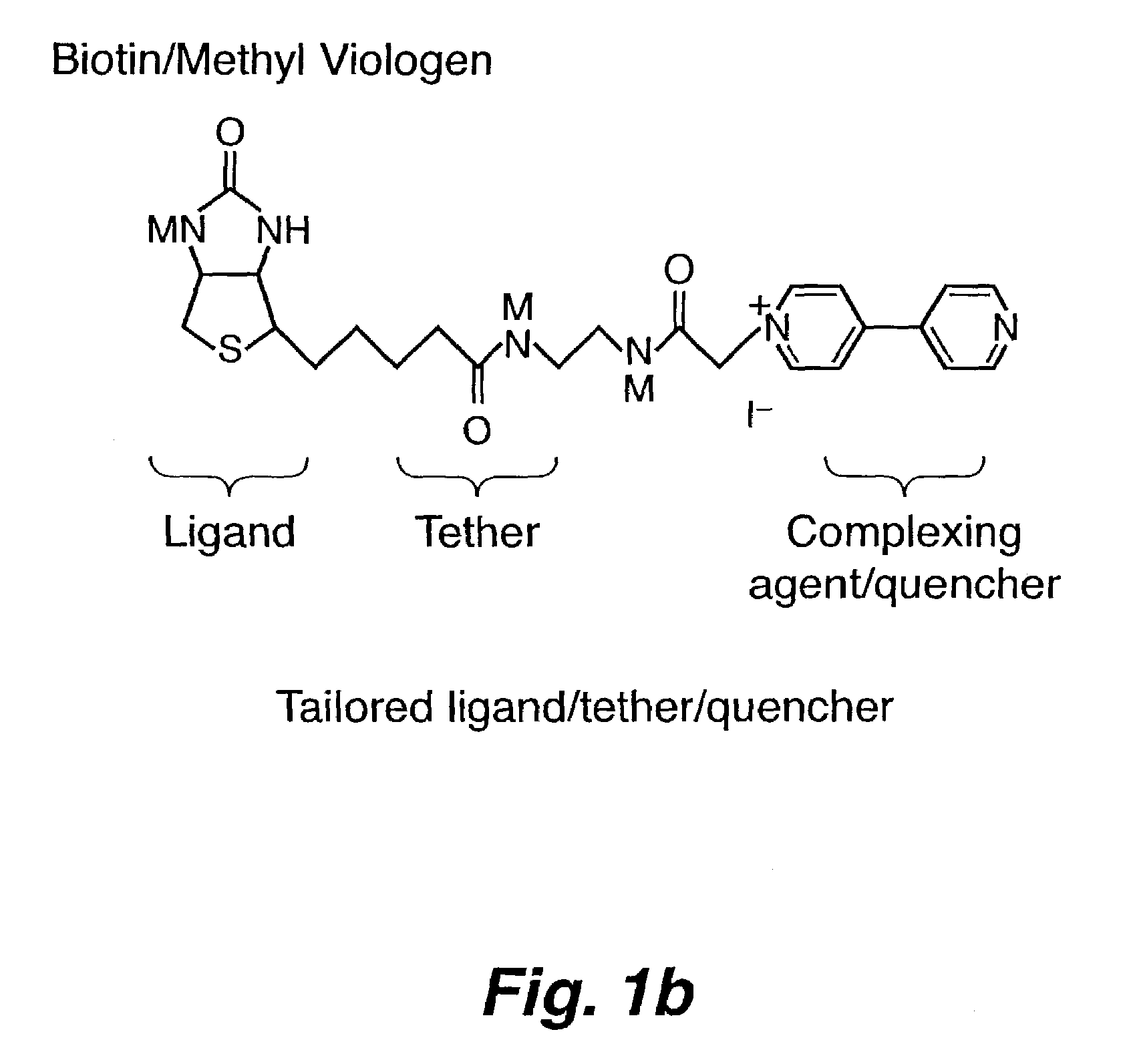Method for detecting biological agents
a biological and chemical sensor technology, applied in the field of biological and chemical sensor detection methods, can solve the problems of sensor subject to false positive readings, difficult actual detection of signals, affecting selectivity,
- Summary
- Abstract
- Description
- Claims
- Application Information
AI Technical Summary
Benefits of technology
Problems solved by technology
Method used
Image
Examples
example 1
[0039]A substituted, water-soluble polyanionic derivative of PPV [poly(2,5-methoxy propyloxysulfonate phenylene vinylene), MPS-PPV] was studied together with its fluorescence properties and excited-state dynamics in the presence of a variety of organic and inorganic reagents whose behavior towards simple trans-stilbene derivatives has previously been investigated. The results have demonstrated the unique excited-state properties of conjugated polymers compared to single chromophore “molecular” excited states. In particular, the use of such a polymer has lead to a greater than million-fold amplification of the sensitivity to fluorescence quenching, relative to that of the single molecular chromophore in dilute solution. This amplification has been harnessed to demonstrate a versatile class of highly sensitive biological and chemical sensors, both in solution and in solid films.
[0040]MPS-PPV is a water-soluble polymer, with molecular weight estimated from light scattering measurements...
example 2
[0046]A glass substrate was prepared by immersion of the glass in an H2O2 / H2SO4 (30 / 70) solution at 70° C. for 1 hour. This substrate was later thoroughly rinsed and sonicated in deionized water for 5 minutes, and this procedure was repeated twice, followed by rinsing with absolute ethanol. This glass substrate was then dried in a 60° C. oven and transferred to a glass jar contained 0.01M of N-[3-(trimethoxysilyl) propyl]ethylenediamine / ethanol solution and soaked overnight. The substrate was removed from the solution and rinsed with absolute ethanol, leaving a monolayer of propyl-ethylenediamine groups chemically bound to the substrate surface. This substrate was later immersed in 10−4 M MPS-PPV aqueous solution for 5 minutes and then thoroughly rinsed with deionized water. A thin MPS-PPV layer was deposited thereby to the substrate due to electrostatic interactions. The UV-Vis and PL spectra of this sample were then measured. This sample was later immersed in 1×10−3 M B-MV solutio...
example 3
[0048]The synthesis of GM1-MV (shown in FIG. 8) was achieved by the reaction of lyso-GM1, which was made based on the literature procedure from GM1(Neurochemicals), with succinimidyl 6-(acetyl-4′-pyridyl-pyridinium)amino)hexanoate in DMF at 60° C. for 12 hours. The product was purified by preparative thin layer chromatography. The starting material, succinmidyl 6-(acetyl-4′-pyridyl-pyridinium)amino)hexanoate was synthesized by coupling succinimidyl 6-(iodoacetyl)amino)hexanoate with 4,4′-bipyridine. In FIG. 8, the methyl viologen portion of the chemical moiety is identified as C; the GM1 portion of the chemical moiety is labeled as L; and the tethering portion of the moiety is labeled T.
PUM
| Property | Measurement | Unit |
|---|---|---|
| time constant | aaaaa | aaaaa |
| luminescence | aaaaa | aaaaa |
| electrical conductivity | aaaaa | aaaaa |
Abstract
Description
Claims
Application Information
 Login to View More
Login to View More - R&D
- Intellectual Property
- Life Sciences
- Materials
- Tech Scout
- Unparalleled Data Quality
- Higher Quality Content
- 60% Fewer Hallucinations
Browse by: Latest US Patents, China's latest patents, Technical Efficacy Thesaurus, Application Domain, Technology Topic, Popular Technical Reports.
© 2025 PatSnap. All rights reserved.Legal|Privacy policy|Modern Slavery Act Transparency Statement|Sitemap|About US| Contact US: help@patsnap.com



